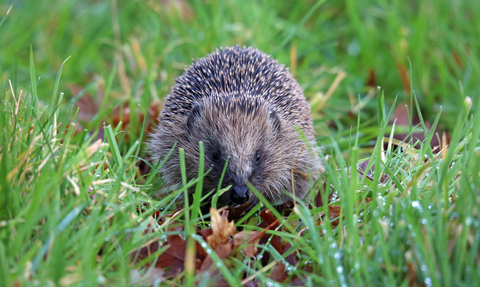
Graham Makepeace-Warne
State of Nature 2024 - Land Mammals
Our Island currently supports fourteen species of land mammal (excluding bats and seals which are treated separately) that appear to have self-sustaining populations. Very few of these species are genuinely considered to be native Manx species. The below list therefore includes several relatively recent arrivals of which only a few are ‘naturalised’ i.e. they arrived here via a shipwreck or on a boat that made it here before the 12th century. In recent decades several feral populations have been established. Other than Irish Stoats, no other resident species has yet been shown conclusively to have arrived here on its own.
Carnivores: our longest established native land mammal is the Irish Stoat (historically known in the local Manx dialect as 'weasels'), which have been present here for millennia. The related feral Domestic Ferret (which is widely but incorrectly referred to as 'polecats' or 'polecat-ferrets') is now well-established across the whole Island. The only other resident carnivore is the feral Domestic Cat, with the Island likely supporting a considerable, but as yet unquantified population.
Lagomorphs: the Island has populations of Mountain Hare (northern hills only), Brown Hare and European Rabbit.
Insectivores: species include European Hedgehog and the Pygmy Shrew.
Rodents: species include the Woodmouse, House Mouse and 'longtail' (Rattus norvegicus).
Recently established, self-sustaining populations of feral animals include: Red-necked Wallaby (all-Island, but predominantly in the north), feral Domestic Goat (Garff coast only) and feral Domestic (Loaghtan) Sheep (Meayll coast). At the Moar above Glen Auldyn there is a remnant (but not self-sustaining) feral population of Domestic Horse which is down (as of 2024) to its last individual.
Calf of Man: After the eradications of 'longtails' and Woodmouse from the Calf of Man in 2012, the only remaining mammals on the Calf are Pygmy Shrew and European Rabbit.
Extinct species: include Irish Elk and an as yet unidentified species of 'Bos' cattle. It is possible that the Island may have once been home to many other species of mammal, potentially including European Bison, Eurasian Elk, Grey Wolf, Wolverine, Eurasian Lynx, Reindeer and Brown Bear.
A paucity of mammals: Like many other small islands, we have a low diversity of mammals. The following native and introduced species currently found on Great Britain (and associated Islands) are absent from the Isle of Man: Eurasian Beaver, European Water Vole, Short-tailed Field Vole, Common Vole, Bank Vole, Yellow-necked Mouse, Eurasian Harvest Mouse, Black R-A-T (Rattus rattus), European Edible Dormouse, Hazel Dormouse, Red Squirrel, Eastern Grey Squirrel, European Mole, Lesser White-toothed Shrew, Eurasian Water Shrew, Common Shrew, Red Fox, Eurasian Otter, European Pine Marten, European Badger, Least Weasel, European Polecat, American Mink, Scottish Wildcat, Wild Boar or any species of deer.
Page last updated 1st May 2025 by DB EP
